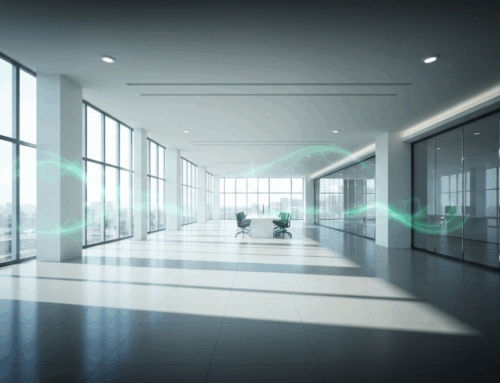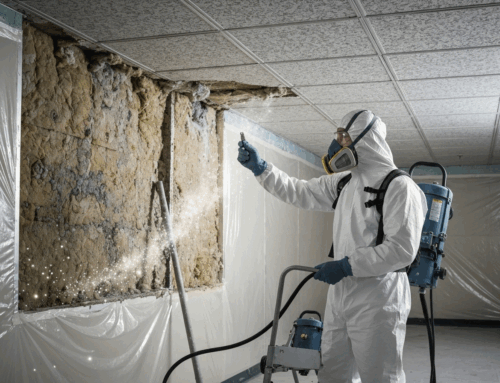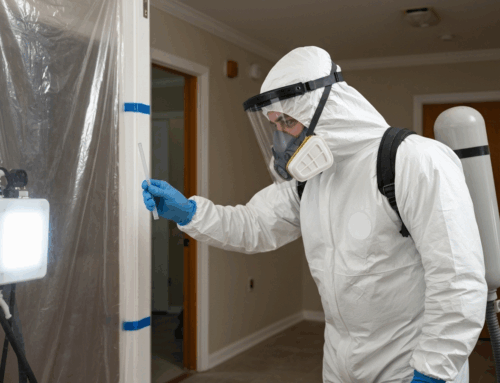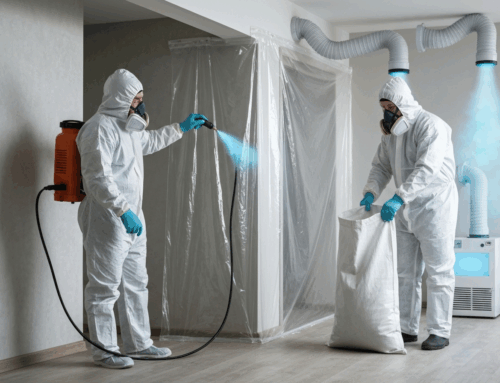Why Hazardous Material Removal is Essential Before Demolition
Embarking on a demolition project, whether for a residential renovation or a large-scale commercial teardown, is a significant undertaking. While the visible aspects like heavy machinery and structural dismantling are often the focus, what lies hidden within the building materials themselves is arguably the most critical consideration: hazardous materials. Failure to properly identify and remove these substances before demolition can lead to severe health risks, environmental damage, and significant legal and financial repercussions. This is precisely why Removing hazardous materials before demolition SC is not just a recommendation, but a fundamental requirement for a safe, compliant, and successful project.
Structures built before the late 20th century, particularly those in South Carolina with its rich architectural history, often contain materials that were once common but are now known to be dangerous. Disturbing these materials during demolition without proper precautions releases harmful fibers or particles into the air, creating immediate and long-term health hazards for workers, occupants, and the surrounding community. Beyond the health implications, regulatory bodies at federal, state (specifically the South Carolina Department of Health and Environmental Control – SC DHEC), and sometimes local levels impose strict rules regarding the handling and disposal of hazardous waste. Non-compliance can result in hefty fines, project delays, and the need for costly cleanup operations.
The primary goal of hazardous material removal is to mitigate these risks entirely before demolition activities commence. This proactive approach ensures that when walls are breached and structures come down, the dust and debris generated do not contain dangerous contaminants. It safeguards the health and safety of everyone involved in the project and the public, protects the environment from pollution, and keeps the project on track and within budget by avoiding unforeseen issues and penalties. For property owners and contractors in South Carolina, understanding this necessity is the first step towards a responsible demolition process.
Identifying Common Hazardous Materials in Older Structures
Before any demolition work can begin, a thorough and accurate assessment is paramount to identify the presence and extent of hazardous materials. This step is often referred to as a hazardous materials survey or inspection. Older buildings, especially those constructed before the widespread understanding and regulation of certain substances, are potential repositories for various dangerous elements.
Among the most common hazardous materials encountered in older structures are:
- Asbestos: Widely used in building materials for its fire resistance and insulating properties until the late 20th century. It can be found in ceiling tiles, floor tiles, insulation (pipe, boiler, attic), roofing materials, siding, joint compound, plaster, and even certain paints. When disturbed, asbestos releases microscopic fibers that, if inhaled, can cause severe respiratory diseases, including asbestosis, lung cancer, and mesothelioma, often many years after exposure.
- Lead-Based Paint: Common in homes and buildings built before 1978. Peeling, chipping, or sanding lead paint during demolition creates hazardous dust and flakes. Ingesting or inhaling lead dust can cause lead poisoning, which is particularly harmful to children and can lead to developmental delays, neurological damage, and other health problems.
- Mold: While mold spores are ubiquitous, excessive mold growth in buildings, often caused by moisture intrusion or high humidity (a common issue in coastal or humid regions of South Carolina), can produce allergens and irritants. Certain types of mold, like Stachybotrys chartarum (black mold), can produce mycotoxins that pose significant health risks, including respiratory issues, allergic reactions, and other ailments. Demolition can aerosolize mold spores and mycotoxins, spreading contamination.
- PCBs (Polychlorinated Biphenyls): Though less common than asbestos or lead, PCBs were used in building materials like caulk, sealants, and fluorescent light ballasts before being banned in the late 1970s. They are persistent environmental pollutants and can be toxic to humans, affecting the immune, nervous, and reproductive systems.
- Mercury: Found in some older thermostats, fluorescent light bulbs, and electrical switches. Mercury is a neurotoxin and requires careful handling and disposal.
- Radon: A naturally occurring radioactive gas that can seep into buildings from the ground. While not a building material itself, demolition activities can potentially disturb the ground and affect radon levels, and existing contamination within materials might need assessment in some cases, though typically radon mitigation is handled separately.
Identifying these materials often requires specialized testing and analysis by accredited laboratories. A visual inspection by an experienced professional is the crucial first step to pinpoint potential materials for sampling. The age of the structure and its renovation history are key indicators of the likelihood of certain hazardous materials being present. In South Carolina, inspectors must be properly trained and accredited to perform asbestos and lead-based paint surveys, ensuring the assessment is accurate and compliant with state regulations.
The Critical Steps for Safe Hazardous Material Abatement
Once hazardous materials have been identified through the initial survey, the next critical phase is abatement – the process of safely removing or mitigating the identified contaminants. Abatement is a highly specialized process that must be performed by trained and certified professionals using specific techniques and equipment to prevent the release of hazardous substances.
The steps involved in safe hazardous material abatement typically include:
- Planning and Preparation: A detailed work plan is developed outlining the scope of work, materials to be removed, methods to be used, safety protocols, containment strategies, air monitoring requirements, and waste disposal procedures. This plan is often submitted to regulatory agencies like SC DHEC for review and approval, particularly for asbestos removal projects exceeding certain thresholds.
- Establishing Containment: To prevent the spread of hazardous fibers or particles, a containment area is constructed around the work zone. This often involves sealing off the area with plastic sheeting, using negative air pressure machines equipped with HEPA filters to draw air into the containment and prevent contaminants from escaping, and establishing decontamination units for workers. The type and rigor of containment depend on the material being removed and the scope of the project. For asbestos removal, multi-layered barriers and strict air pressure differentials are standard.
- Worker Protection: Abatement workers wear specialized personal protective equipment (PPE) appropriate for the hazard. This typically includes full-body disposable suits, gloves, and respiratory protection, such as negative-pressure respirators or supplied-air respirators, depending on the airborne concentration risk. Proper training on the use and limitations of PPE is essential.
- Safe Removal Techniques: Hazardous materials are carefully removed using techniques designed to minimize disturbance and the release of contaminants. For asbestos, this often involves wetting the material (wetting agent) to reduce fiber release, carefully disassembling components rather than breaking them, and using HEPA-filtered vacuums. Lead paint may involve wet scraping, chemical strippers, or HEPA-filtered sanding, followed by thorough cleanup. Mold remediation involves identifying and addressing the moisture source, containing the area, physically removing moldy materials, cleaning contaminated surfaces, and applying antimicrobial treatments if necessary.
- Packaging and Disposal: Removed hazardous materials are immediately placed into clearly labeled, sealed containers (e.g., double-bagged for asbestos) to prevent exposure during transport and disposal. These materials are classified as hazardous waste and must be transported by licensed haulers to approved disposal sites that are equipped to handle such waste safely. South Carolina has specific regulations governing the transportation and disposal of asbestos and other hazardous materials.
- Cleanup and Decontamination: After removal, the work area is meticulously cleaned using HEPA-filtered vacuums and wet wiping techniques. All surfaces are decontaminated.
- Post-Abatement Clearance Testing: Before the containment is dismantled and the area is reoccupied or demolition proceeds, independent clearance testing is performed. For asbestos, this typically involves aggressive air sampling within the containment area to ensure airborne fiber levels are below regulatory limits. For lead, it might involve dust wipe sampling. For mold, visual inspection and potentially air or surface sampling confirm that the remediation was successful. This step is crucial to verify the effectiveness of the abatement process.
Each type of hazardous material requires specific abatement protocols dictated by federal, state, and sometimes local regulations. Attempting to remove these materials without proper training, equipment, and adherence to safety procedures can significantly worsen the contamination, putting everyone at greater risk.
Ensuring Worker and Public Safety During Removal
The safety of both the abatement workers and the general public is the highest priority throughout the hazardous material removal process. Strict adherence to safety protocols is non-negotiable and forms the foundation of any responsible abatement project. This emphasis on safety is a core value for professional abatement companies operating in South Carolina.
For the abatement workers themselves, safety measures extend beyond just wearing appropriate PPE. It includes comprehensive training on recognizing hazardous materials, understanding the health risks associated with exposure, implementing safe work practices, properly setting up and maintaining containment, using abatement equipment correctly, following decontamination procedures, and responding to emergencies. Workers undergo medical surveillance programs, especially for asbestos work, which may include regular physical examinations and lung function tests to monitor their health.
Protecting the public and the environment surrounding the work site is equally critical. This involves:
- Securing the Work Area: The abatement zone is clearly marked and restricted to authorized personnel only. Signage is posted warning of the hazardous work in progress.
- Containment Integrity: Maintaining the integrity of the containment barriers throughout the project is vital to prevent the escape of contaminants into adjacent areas or the outside environment. Regular checks are performed to ensure seals are intact and negative pressure is maintained.
- Air Monitoring: Continuous or periodic air monitoring may be conducted outside the containment area to ensure that no hazardous fibers or particles are escaping. Perimeter air monitoring might be required for large-scale projects or those in populated areas.
- Safe Waste Handling and Transport: Properly sealing and labeling hazardous waste containers prevents accidental exposure during handling and transportation. Using licensed hazardous waste haulers ensures the materials are transported safely to approved disposal facilities, minimizing risk to the public and the environment along transportation routes in South Carolina.
- Communication: For projects in occupied buildings or adjacent to public spaces, clear communication with occupants, neighbors, and building management about the nature of the work, the duration, and safety measures being taken helps manage concerns and ensures cooperation.
- Emergency Procedures: Having clear emergency procedures in place, including plans for accidental releases or medical emergencies, is essential for rapid and effective response.
Ensuring these safety measures are rigorously followed protects workers from immediate and long-term health risks associated with exposure and prevents the contamination of surrounding areas. It demonstrates a commitment to responsible abatement practices and builds trust with clients and the community. Professional firms prioritize this aspect, understanding that cutting corners on safety is never an option when dealing with hazardous substances.
Removing Hazardous Materials Before Demolition: Understanding Local Compliance
Navigating the regulatory landscape is a fundamental part of any hazardous material removal project before demolition, especially in South Carolina. Compliance with federal, state, and sometimes local regulations is not merely a bureaucratic hurdle; it is a legal requirement designed to ensure work is performed safely and responsibly, protecting public health and the environment. Failing to comply can lead to significant delays, hefty fines, mandates for corrective action, and potential legal liabilities.
At the federal level, the Environmental Protection Agency (EPA) and the Occupational Safety and Health Administration (OSHA) set standards for hazardous materials, including asbestos and lead. EPA regulations, such as the National Emission Standards for Hazardous Air Pollutants (NESHAP), govern asbestos removal procedures, notification requirements for demolition and renovation projects involving asbestos, and disposal standards. OSHA regulations focus on worker safety, setting permissible exposure limits, requiring specific work practices, mandating the use of PPE, and requiring training and medical surveillance for workers handling these materials.
States often have their own environmental and occupational safety agencies that implement and enforce regulations that can be as strict as, or even stricter than, federal standards. In South Carolina, the primary agency overseeing hazardous materials like asbestos and lead is the Department of Health and Environmental Control (SC DHEC). SC DHEC has specific regulations concerning:
- Asbestos Notification: Projects involving the demolition or renovation of structures with a certain amount of regulated asbestos-containing material (RACM) require notification to SC DHEC before work begins. This notification period allows the agency to review the project plan and potentially inspect the site.
- Asbestos Licensing and Accreditation: Individuals and companies performing asbestos inspection, management planning, project design, supervision, and abatement work in South Carolina must be licensed and accredited by SC DHEC. This ensures that only trained and qualified professionals handle asbestos.
- Work Practices: SC DHEC regulations detail specific work practices that must be followed during asbestos removal, including wetting procedures, containment requirements, and air monitoring standards, aligning with or exceeding federal NESHAP requirements.
- Disposal: Regulations specify how asbestos waste must be packaged, labeled, transported, and disposed of at approved landfills in South Carolina that are permitted to accept asbestos.
- Lead-Based Paint: While less stringent than asbestos regulations in some areas, SC DHEC and other state agencies may have requirements regarding lead renovation, repair, and painting (RRP) activities, particularly in child-occupied facilities. Proper lead-safe work practices are mandated for projects disturbing lead-based paint.
Understanding and adhering to these layered regulations requires expertise. A qualified abatement professional in South Carolina will be intimately familiar with the specific requirements set forth by SC DHEC and any relevant local ordinances. They handle the necessary permits, notifications, and documentation, ensuring the project proceeds legally and compliantly from start to finish. Attempting to navigate these regulations without expert knowledge is a common pitfall that can lead to costly errors and legal issues. For anyone planning demolition in South Carolina, verifying that your chosen abatement contractor is properly licensed and knowledgeable about SC’s specific rules is a critical due diligence step.
Selecting Qualified Professionals for Hazardous Material Work
Given the significant health risks and regulatory complexities associated with hazardous material removal, the selection of a qualified and reputable professional is arguably the most important decision in the pre-demolition phase. This is not the time for cutting corners or hiring inexperienced contractors. The quality of the abatement work directly impacts the safety of the demolition crew, future occupants, and the environment.
When seeking professionals for removing hazardous materials before demolition SC, consider the following factors:
- Licensing and Certification: Verify that the company and its key personnel hold the necessary licenses and certifications issued by the relevant state authorities, such as the South Carolina Department of Health and Environmental Control (SC DHEC) for asbestos and lead work. Ask to see copies of their credentials and confirm their validity.
- Experience and Expertise: Look for a company with a proven track record in performing the specific type of hazardous material removal required for your project (e.g., asbestos abatement, mold remediation, lead paint stabilization/removal). Ask about their experience with similar types of buildings and project scopes in the South Carolina area. Experienced professionals are better equipped to anticipate challenges and implement effective solutions.
- Training: Inquire about the training and qualifications of their work crews. Workers should have undergone formal training programs on hazardous material handling, safety protocols, and proper abatement techniques.
- Insurance Coverage: Ensure the company carries adequate insurance, including general liability and, importantly, pollution liability or environmental insurance. This protects you in case of accidents or unforeseen issues during the abatement process.
- References and Reputation: Ask for references from past clients and check their online reviews and reputation. A reputable company will have positive feedback and be willing to provide contacts for completed projects.
- Understanding of Regulations: Confirm that the company is knowledgeable about and strictly adheres to all applicable federal, state (specifically SC regulations), and local regulations regarding hazardous material removal and disposal. They should be able to explain the regulatory requirements relevant to your project.
- Detailed Proposal and Work Plan: A professional company will provide a detailed written proposal outlining the scope of work, methods to be used, timeline, cost breakdown, and how they plan to address safety, containment, and disposal. They should also be able to provide a specific work plan for the abatement project.
- Use of Proper Equipment: Ensure they utilize appropriate, well-maintained equipment for containment, negative air pressure, air monitoring, and personal protection.
- Emergency Response Plan: A competent company will have clear procedures in place for responding to emergencies, such as containment breaches or accidental releases.
Choosing a qualified professional like Piedmont Quality Air, with a focus on safety, experienced and trained personnel, utilization of specialized equipment, and adherence to federal and state regulations for hazardous material removal in South Carolina, provides peace of mind. They understand the nuances of working in residential and commercial settings, aiming to minimize disruption while ensuring the highest safety standards are met. Getting a free estimate allows you to discuss your specific project needs and assess their expertise firsthand.
Achieving a Safe and Compliant Demolition Project
The ultimate goal of the entire process – from initial inspection through meticulous abatement – is to pave the way for a safe, efficient, and compliant demolition project. When hazardous materials are properly identified and removed by qualified professionals before demolition begins, the risks associated with disturbing these dangerous substances are effectively mitigated. This allows the demolition phase to proceed with significantly reduced health, environmental, and legal risks.
Achieving a safe and compliant demolition project involves several key outcomes resulting from successful hazardous material abatement:
- Protected Worker Health: Demolition crews can work safely without the risk of exposure to airborne asbestos fibers, lead dust, mold spores, or other contaminants released from building materials.
- Protected Public Health: The risk of contaminants escaping the work site and affecting the health of nearby residents, building occupants (in the case of selective demolition), and the general public is minimized.
- Environmental Protection: Proper containment and disposal methods prevent the pollution of soil, water, and air, safeguarding the local ecosystem in South Carolina. Hazardous waste is managed according to strict regulations, ensuring it is transported and disposed of in approved facilities.
- Regulatory Compliance: By following required inspection, notification, work practice, and disposal procedures, the project stays compliant with federal and state regulations (like those from SC DHEC). This avoids potential fines, penalties, and legal challenges that can arise from non-compliance.
- Predictable Project Timeline and Costs: Addressing hazardous materials upfront removes a major source of potential delays and unexpected costs during the demolition phase. Discovering hazardous materials mid-demolition can halt the project, requiring emergency abatement procedures that are often more expensive and time-consuming than planned removal.
- Cleaner Demolition Debris: With hazardous materials removed, the remaining demolition debris can often be handled and disposed of more easily and less expensively, potentially allowing for increased recycling or reuse of non-hazardous materials.
- Peace of Mind: Property owners and contractors can have confidence that the project was handled responsibly, protecting health, the environment, and their legal standing.
For any demolition project in South Carolina, integrating hazardous material assessment and removal as a mandatory pre-demolition step is a sign of responsible planning. It requires partnering with professionals who understand the specific challenges and regulatory environment of the region. Companies specializing in interior demolition that also possess expertise in hazardous material removal are particularly valuable, as they can offer a streamlined and coordinated approach, ensuring hazardous materials are safely handled before subsequent demolition activities.
In conclusion, while the excitement or necessity of demolition might focus attention on the structural changes, the unseen hazards within building materials demand prior attention. Removing hazardous materials before demolition SC is not just a safety precaution; it’s a legal obligation and an ethical imperative that ensures the health of individuals, the protection of the environment, and the successful, compliant completion of your project in the Palmetto State.
Have questions? Contact us here.






